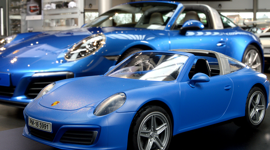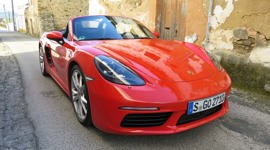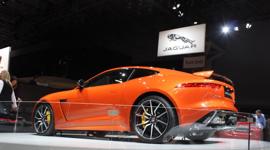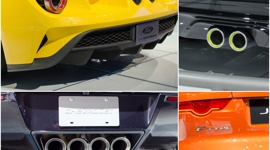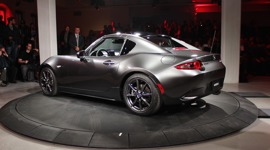With every generation, the Porsche 911 gets faster, more capable and more sophisticated. To achieve this march of progress, Porsche have switched water-cooled engines, added direct injection, shifted the centre of balance, and added turbos along with myriad other engineering improvements to chassis and powertrain. However, they still hang a horizontally opposed six-cylinder over the rear axle, so they haven’t strayed too far from the formula that has made this the benchmark for sports cars around the world.
With this generation (991), the 911 has gotten longer, faster and more efficient as well, and midway through its generation, Porsche has made some significant changes to its Carrera and S models. The biggest change, in terms of performance, is the addition of turbocharging to models not adorned with the cursive “Turbo” badge on the rump. The new 3.0L turbo flat-six offers 20 hp increases for both Carrera and S models, which now stand at 370 hp and 420 hp, respectively. In a car weighing under 1,500 kg, this output, combined with 331 or 368 lb-ft of torque, is good for acceleration to 100 km/h in no more than 5 seconds, and less than 4 seconds for the S with PDK and Sport Chrono Package.
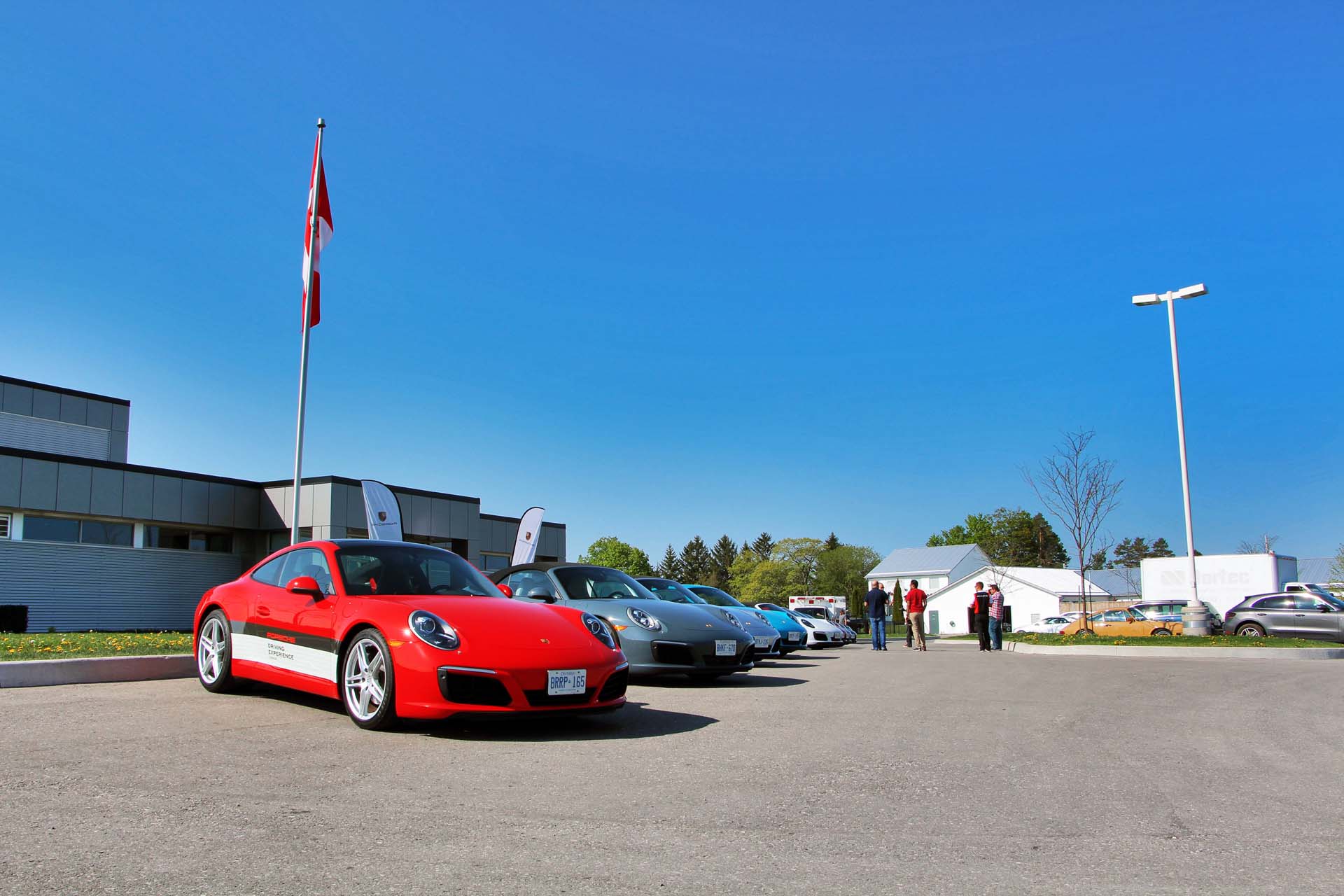
Numbers are all well and good, but they have never been the calling card of the 911, except perhaps the lap times you can achieve with them, and Porsche claims that the revisions to the new 911 has allowed them to slice 10 seconds off the 2016 model’s Nürburgring time, now down to 7:30, territory once limited to supercars and exotics. No, the 911’s legend arose from its engagement, the ability of the machine to connect with a driver, and to facilitate a driver’s connection to the road and improve his or her driving. In this day and age of technological advances and increasing number of systems governing a car’s performance and isolating one from the intrusions of the road, the 911 still champions the old-fashioned connection to the road. Is it as visceral as early generations? Of course not, but it remains one of the best among the current crop of turbocharged, adaptive suspension, trick stability control performance machines on the market.
Porsche invited us to take part in their 911 Grand Tour, which was a travelling road show to tracks across Canada, where media and prospective buyers could get a little more intimate with the 911’s ultimate capabilities than a typical test drive would allow. We were welcomed to the Mosport Driver Development Track (DDT), with the full range of 911 models including Carrera, S, Targa and Cabriolet among others.
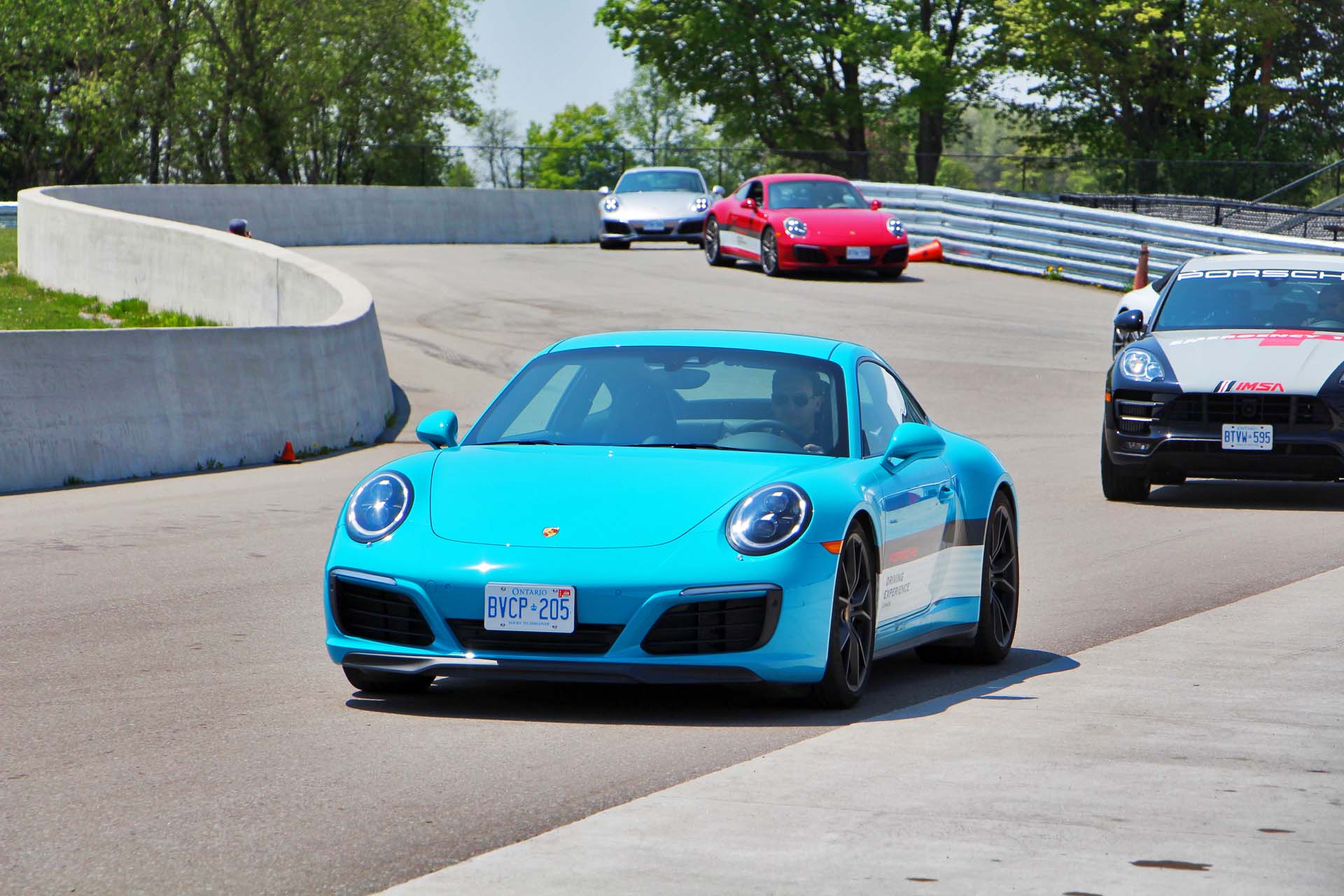
The day started with the usual baby steps, including a drive through the area’s roads to get a casual feel for the cars and sample the standard Porsche Active Suspension Management (PASM) with adaptive dampers, which trickles down from high-performance models and option packages. Granted, roads in the area were not as severely damaged as those in Toronto and many major urban centres, but the 911 still manages to exhibit excellent manners on rougher patches while remaining a sports car to its core. You feel every bump in the road, but they are not jarring or teeth-rattling. Likewise, these are the base models, so ensuing performance models will offer more dedicated track-oriented suspensions that will rearrange organs and provide long-term job security for your dentist and chiropractor.
Our next exercise, a small autocross course, demonstrated the other side of the adaptive suspension and some trick new steering aids trickling down through the lineup. We were at liberty to start with the launch control, and we made full use of its consistent catapulting effect, then quickly threw the various trims into quick slaloms and tight side-to-side sections. The 911 is flat and poised, and S models can be ordered with a four-wheel steering system that aids in cornering at low speeds and improves stability at high speeds. We tested models with and without this steering system, and both are phenomenal, so what benefits it offers are incredibly subtle and more gimmick than game changer. Perhaps if chasing tenths of a second on lap times, but for a street car or recreational lapping, the conventional steering is more than precise enough.

That steering is at the heart of what makes the 911 so great. Sure, the maximum torque, now available from 1,700 rpm to 5,000 rpm, launches you off the line in a blur and the brakes suck your eyeballs out of your face, but the steering system has two qualities that make this car one of the best machines you can spend your money on. First, when you are dialed in on the cones or the apex you need to clip, the steering essentially disappears, and the car flows through your vision and thought without any effort. Second, when you take a step back from trying to find 10/10ths of your ability, you can appreciate the incredible job the engineers have done tuning the electric motors to resist and submit to steering inputs; the weight is firm, never elastic, and the responses are precise and consistent from lock to lock, heightening the sense of connection when you consciously go looking for it.
After our brief tour and autocross drills, the rest of the day was spent gradually increasing our pace on the DDT track, where all of the 911’s steering, suspension, powertrain and braking came together to help me learn the track and push the limits of the Macan Turbo that was leading our convoy. While not a big track like its major-league circuit at Canadian Tire Motorsport Park (the original Mosport), the turbocharged torque was nonetheless hugely appreciated through the track’s many tight, low-speed corners and short straights.
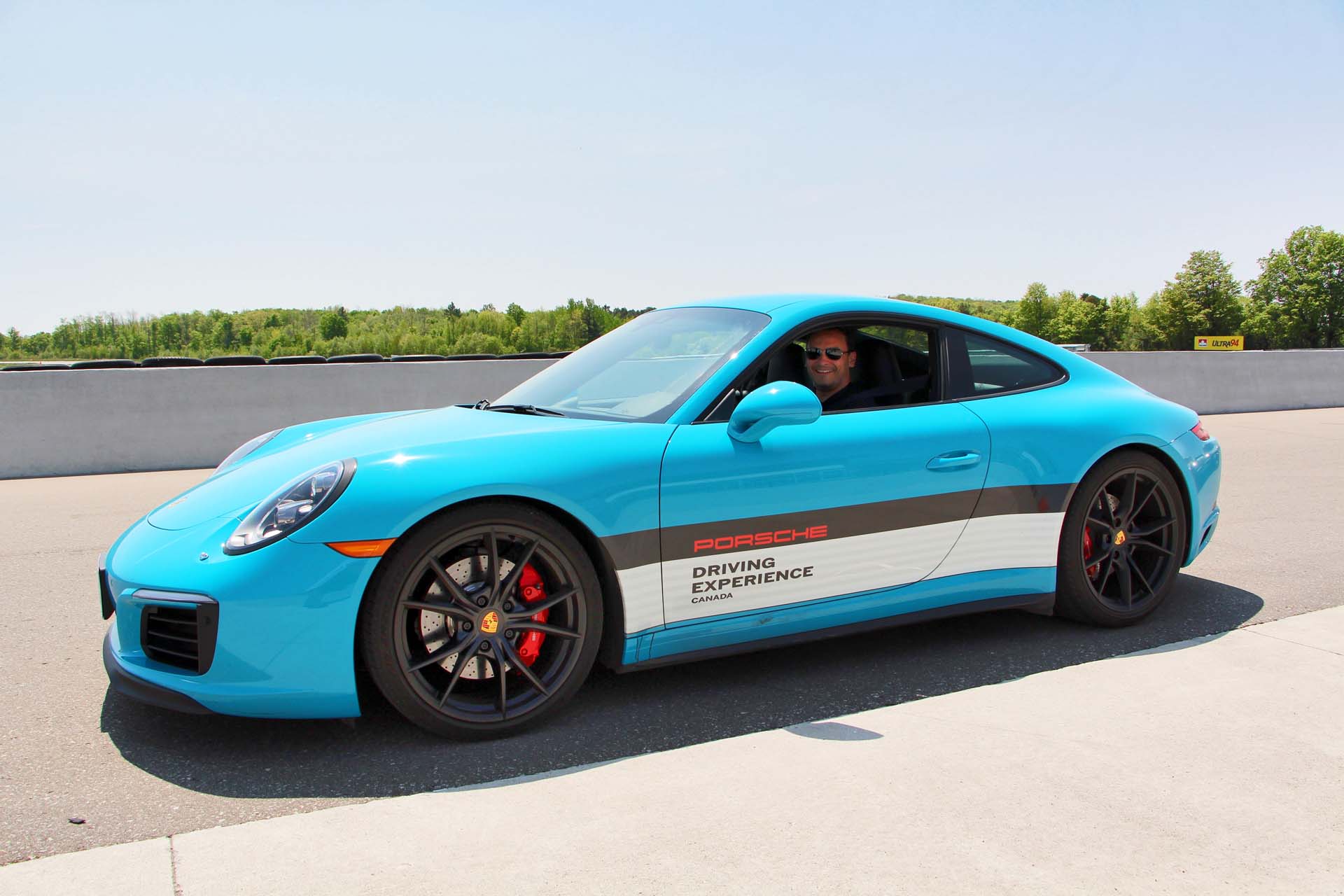
Not only is the steering communicative and consistent, the entire car envelops you with information, the body leaning, the tires squealing and the seats and pedals transmitting so that it reads like an advanced and subconscious g-meter through your extremities, with corrective inputs a mere reflex away. While every vehicle is a slave to physics, the 911 will only exceed its limits if you deliberately aim to, maintaining its balance even at the hands of my limited finesse and unsubtle inputs. Because of its balance and excellent grip, it’s both a learner’s car and a track machine for advanced drivers, with excellent bones and a variety of ways to tailor it to your tastes and skill.
Although a seven-speed manual is the base transmission on the Carrera and S, cars at this event were all exclusively DPK dual-clutch autos, further improving our ability to quickly find speed. For ultimate engagement with one’s vehicle, the manual transmission remains the purist’s choice, especially the seven-speed from Porsche, but Porsche’s PDK is still the best automated transmission for performance without any penalties for daily driving. With its own Sport mode and working in concert with Sport or Sport+ mode available with the Sport Chrono package, the PDK is graced with precognition and primes gears for corner exit better than any alternative, interpreting speed, braking and g-forces to recognize what gear you will need better than any average human driver. Simply put, PDK is faster, and allows you to focus your engagement on steering, throttle and braking. The question is, are you looking for outright speed, or the involved experience, the test of your own abilities to keep up with the chassis and engine?
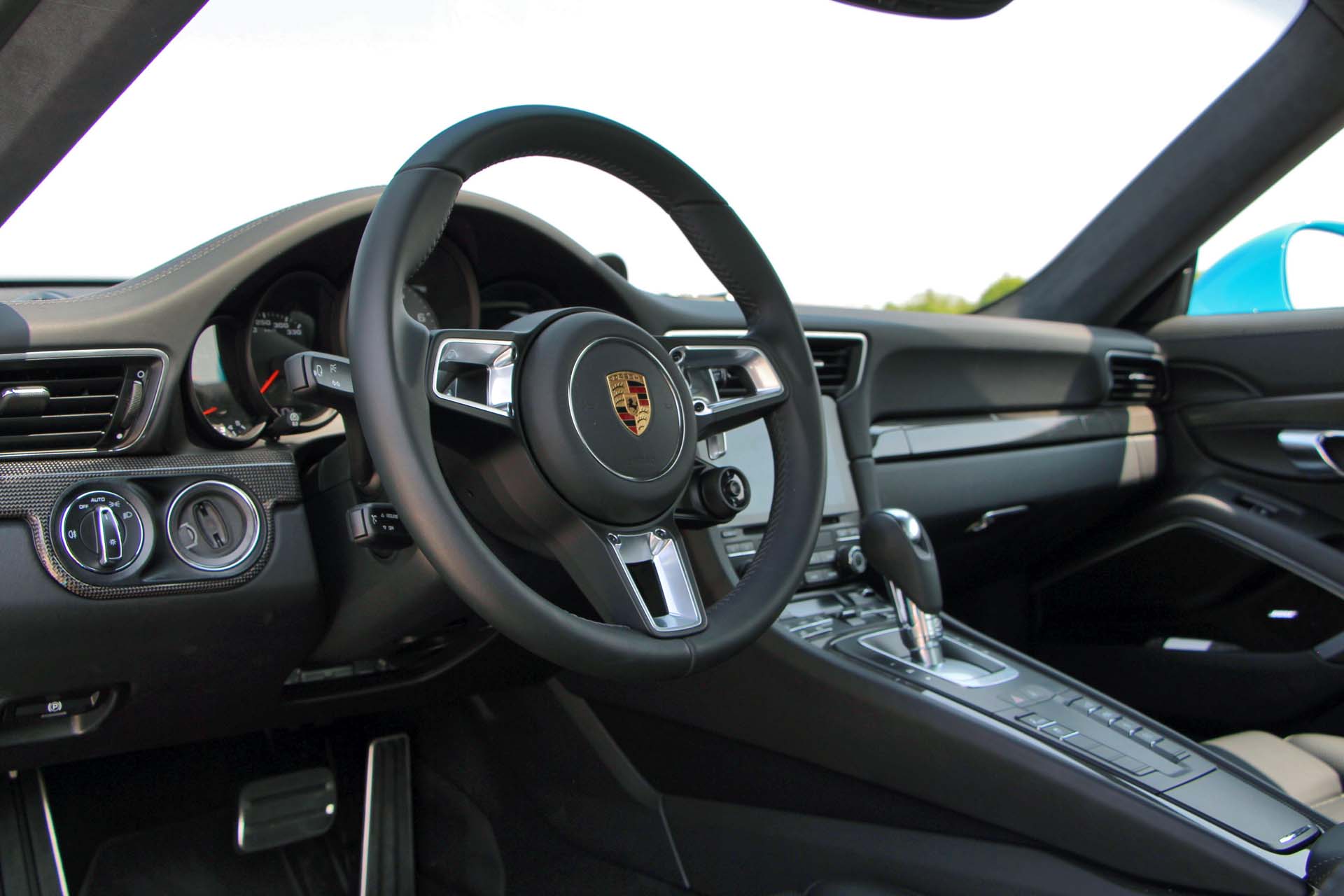
Whichever answer you choose, Porsche has your companion, with a 911 to suit any taste, from open-top Cabrios and Targas to Coupes with rear-wheel drive or all-wheel drive, various levels of power, and a near-infinite list of optional features with which you can customize your order. At its core, the 911 remains true to its legend: a sports car with far more capability than any public roads will allow, but more than enough polish to enjoy every day. But to truly learn what the 911 is all about, only a day at the track will allow you to understand just how capable it is, and it will be the ever-understanding driving coach that can gently and subtly invite you to keep pushing your limits with its clear communication and forgiving balance.

























